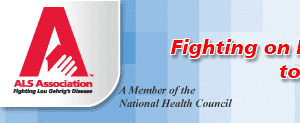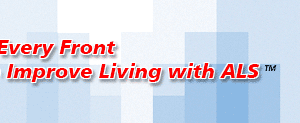

 |
 |
|
April 25, 2007 AAN Meeting 2007: ALS Advances at a GlanceRoberta Friedman, Ph.D., Research Department Information CoordinatorThe 2007 annual meeting of the American Academy of Neurology in Boston, April 30-May 5, provides ALS researchers from around the world an opportunity to learn about the most recent advances in the field that will lead toward more effective therapies. Platform presentations and poster sessions will highlight important progress in understanding what occurs in the human body to produce ALS and how to develop new strategies for treating the disease. Sessions throughout the meeting will focus on developing areas of research with direct implications for ALS. Please visit us at booth #2112. The ALS Association is making available this preview of the meeting with emphasis on new developments relevant to the disease: A special scientific session including formal presentation of The Sheila Essey Award presented to Christopher Henderson, Ph.D., of Columbia University takes place on Wednesday at 3:45, in Room 311, followed by talks covering biomarker candidates, genome screening, and the link to ALS of variants in a gene for a set of detoxifying enzymes called paraoxinases. Presidential Plenary Session, Tuesday, May 1, 9:00 a.m. 12:00 p.m., Hynes Convention Center Auditorium including: “ALS: From Mutations to Mechanisms and Medicines”/Robert H. Brown, Jr., M.D., D.Phil, Presenter Scientific Session, Tuesday, May 1, 2 3:30 p.m., Room 311, Clinical trials results; Nogo A; Antisense and more Hot Topics Plenary Session, Tuesday, May 1, 5:15 p.m. 6:15 p.m., Hynes Convention Center Auditorium including:
Thursday afternoon features a session on Frontotemporal Dementia, 3:30 p.m., Room 210, concluding at 5:05 p.m. with a talk on links between the frontotemporal dementias and ALS by Bradley Boeve, M.D. Progress in RNAi strategies for ALS and considerations for clinical trials in ALS will be presented as part of a Therapy of Genetic Disorders conference on Friday, at the Sheraton Hotel. Presenters include Michael Benatar MBChB, D.Phil, and Timothy Miller, M.D., Ph.D. Don Cleveland, Ph.D., will give an overview from 9:55 to 10:30 a.m. Stop by our booth or visit www.alsa.org/research to learn more about ALS and ALS research and to get your copy of our new research newsletter, RESEARCH ALS TODAY. SITE FEATURE: Our monthly ALS Research Journal News features recent advances relating to the disease as published in the scientific literature. Send suggestions and comments to [email protected]. To be included on our mailing list, email [email protected]. The ALS Association Guide of ALS Highlights at AAN 2007, BostonTuesday, May 1, 2007, 7:00 a.m., Posters (Attended 7 -8:30 a.m.), Anterior Horn P01.082 deltoid denervation in ALS patients predicts diaphragm denervation. 2-3:30 p.m., Session, Anterior Horn Wednesday, May 2, 2007, Sessions Room 306, Neurogenetics and Gene Therapy: 3:45 -4:45 p.m., Room 311, The Sheila Essey Award presentation and platform session:
4:30 p.m., Room 310, Brain computer interfacing in ALS and in nervous system injury Posters, 4:00 p.m. (Attended 5:30 7 p.m.) Thursday, May 3, 2007, 11:30 a.m., Posters (Attended Noon 1:30 p.m.) P07.050 screen of all the exonic and flanking intronic sequences of 3 causative genes and 7 related genes for ALS 2 6 p.m., Room 210, Integrated Neuroscience Session on FTD and ALS , highlights: 4:00 p.m., Posters (Attended 5:30 7 p.m.) Friday, May 4, 2007, 9 a.m. 5 p.m., Sheraton Hotel, Therapy of Genetic Disorders, highlights:
-------------------------------------- |
|
| |||
The ALS Association �2004 The ALS Association. All rights reserved. Contact the Webmaster |